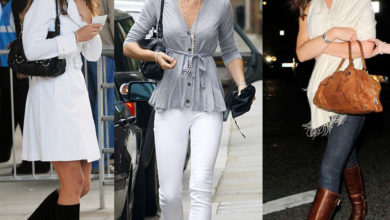Womens Fashion
Women’s Fashion – Do We All Have a Choice?
Fashion for the western woman today seem to be a case of ‘anything goes’. A western woman has freedom of choice when it comes to the length of skirt she wears or the amount of cleavage she chooses to display. We see what we wear as a reflection of our personality; we wear clothing styles that will enhance our womanly shape, to be found attractive to the opposite sex. Referring to the animal world, the clothing we wear could be interpreted by some as our ‘mating colours’ – to attract others and flaunt ourselves to ensure the continuation of the human race.
Modesty
Modesty is surely a human invention; it is not something we are born with. The country of our birth, our upbringing, religion and social status all have an influence on what we accept as modest clothing.
Beauty
A woman’s beauty is treated differently around the world. In the western world, ‘slim is in’ as far as body shape is concerned and images of slim women in figure-hugging fashions abound, exposing a beautiful body shape is encouraged and celebrated. However, in many countries religion dictates that a woman’s beauty should only be observed by her husband. In Muslim countries, it is dictated that a woman must wear clothing which protects her modesty.
Muslim Clothing for Women – The Jilbab, Hijab and Abaya
The Jilbab, Hijab and Abaya are garments worn by Muslim women when out in public. These thick, loose garments are worn to cover the woman’s hair, head and hands. They can also be worn when the woman is in the presence of male strangers within her own home or that of relatives. The intention of these garments is to hide the shape of the women’s body and beauty to protect their modesty. Jewellery should not be worn on the outside. Bright colours or fancy patterns are distinctly frowned upon in case they attract attention from men.
The Abaya is worn from the shoulders down with the Hijab covering the head and hair (but not face), whereas the Jilbab is a garment which covers the full body from head to foot. A Muslim woman must also not wear masculine style clothing.
The debate continues as to whether Muslim women have freedom of choice when it comes to their own appearance and dress code, some say the strict dress code is demeaning. However, many Muslim women welcome the wearing of conservative clothing as it protects them from unwanted sexual attention and they prefer to be deemed attractive because of their personalities rather than their physical looks.
Shireen Ahmed is interested in to international fashion and a keen dressmaker, she can often be found checking out ladies Muslim clothing at www.islamshoppingcentre.com





